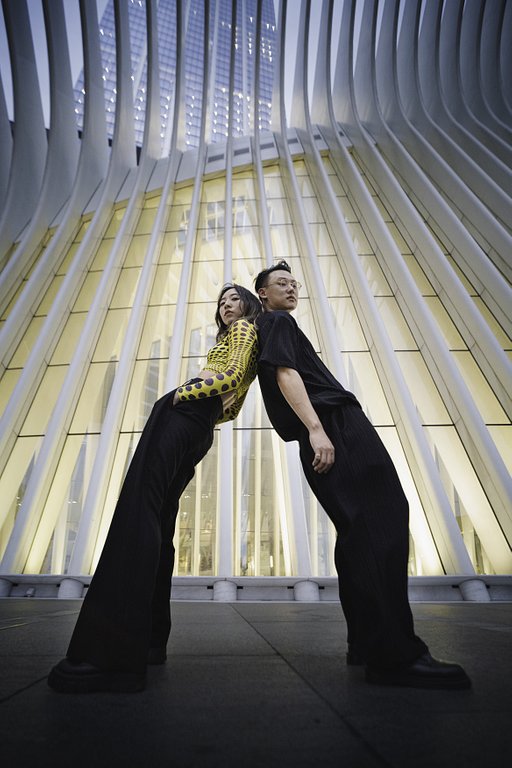Ultra, Slim, & Wide: The Vivitar UWS and Superheadz Slim & Wide
17 32 Share TweetA long-time fan of plastic cameras, Argentinean writer and photographer Lorraine Healy is the author of “Tricks With A Plastic Wonder,” a manual for achieving better results with a Holga camera. In this article, Healy teams up with @honeygrahams224 to sing the praises of two plastic toy cameras.

In my last article, I shared my discovery of the Holga 135BC as the perfect camera for my ongoing project of shooting old storefronts and old signs everywhere I go. I shared that one of the limitations of the camera was that it was hard or impossible to use in certain places (like the narrowest streets of the old parts of my native Buenos Aires) because the focal length did not allow for complete capture of the storefront in question. I mentioned that I had found the Superheadz’s reinterpretation of the old Vivitar UWS as the perfect solution for shooting storefronts in narrower streets. My Lomo friend @sirio174 very pertinently suggested I also could use the Sprocket Rocket and crop the sprockets, if I so desired—another great solution for dealing with storefronts in narrow alleys. I asked Lomo friend @pinkbutterfly, who is carrying out a similar project with old storefronts in Japan (a beautiful series, make yourself you check it out!), what she used in the way of lenses for her project, and she replied “Nikon FM3A with the 35mm lens, sometimes the 50mm or the 85mm. When I want to shoot the whole building, I use the 35mm lens.“ I think @pinkbutterfly has the right idea: by using the same camera (the Nikon FM3A) she keeps a consistent look throughout the project while using the three prime lenses as needed by the situation.

I remembered @honeygrahams224’s enthusiasm for her Vivitar UWS, essentially the same camera as the Superheadz Slim & Wide. She joins me here to talk about this fabulous toy camera and its loveable quirks.
From @honeygrahams224: The Ultra Wide and Slim was meant to look like the pocket-sized digital cameras that were popular at the time, early 2000s. Perhaps the wide angle was meant to give the photos the look of a higher quality camera.

The camera is tiny, flimsy and plastic, but made to look like a chrome digital camera. I love the box that it comes in, from "gift express" somewhere in China. This looks like the type of pre-wrapped gift that would be at stores like Brookstone, or little airport shops. It was obviously meant for traveling. The instructions are as bare-bones as it can get. But I really do see a difference in how the original works, versus the Superheadz version.

According to Michael Raso of the Film Photography Project, other than the bright colors in which the Superheadz Slim & Wide comes, the cameras are essentially the same. Not so, say the original Vivitar UWS fans!
The vignetting is way more pronounced with the Vivitar, as well as a well-known, wacky artifact when shooting into the sun, which can be used to great advantage.



From @lorrainehealy: I was given my first SuperHeadz (a “Blue Ribbon” model) a few years ago after Vivitar had stopped making the original UWS. I took it on my first beginning-to-end Route 66 trip in 2011 and really liked the results. I have included a couple of images taken with that camera, with old, expired 35mm film. It really was my first experience with wide angle and didn't use it much after this trip. I put it away, refound it (as we do when cleaning the stacks of cameras!), wore it out. I immediately bought a replacement, this time a bright pink model nicknamed “Pink Flower.”

The technical information on both cameras: * All-plastic point and shoot 35mm film cameras * f/11 aperture * 22mm wide-angle fixed focus lens * Shutter speed is also fixed at 1/125s (it could be 1/100s or 1/90s) * All mechanical, no batteries needed * The film advance cog might break when used repeatedly with 36 exposure film, it seems to put too much tension on the system. Use a 24-exposure film.
As you can see by the work of both collaborators on this article, images taken with either the Vivitar UWS or the Superheadz Slim & Wide can be cross-processed, pushed, etc. While the instructions recommend the use of 400 iso film, we have used any speed film successfully, provided that it matches the prevailing light. The Vivitar UWS can be obtained through eBay auctions, and the Superheadz is available through many photo retailers. Give them a try!

Many, many thanks to Lomo friends @sirio174 and @pinkbutterfly for their generous advice on issues for this article! Grazie, arigato!
Lorraine Healy (@lorrainehealy) is an Argentinean writer and photographer living in the Pacific Northwest. A long-time fan of plastic cameras and she is the author of “Tricks With A Plastic Wonder,” a manual for achieving better results with a Holga camera, available as an eBook from Amazon.com.
@honeyGrahams224 is an alternative photographer and full-time therapist exploring all the interesting corners of Minneapolis through the lens of a camera. She specializes in double-exposures and mixed-media creations. When not working or shooting, she is trying to organize all of her negatives and scans into some sense of order.
written by Lorraine Healy on 2017-09-27 #35mm #wide-angle #color #gear #vivitar-ultra-slim-wide #superheadz-wide-slim
















17 Comments